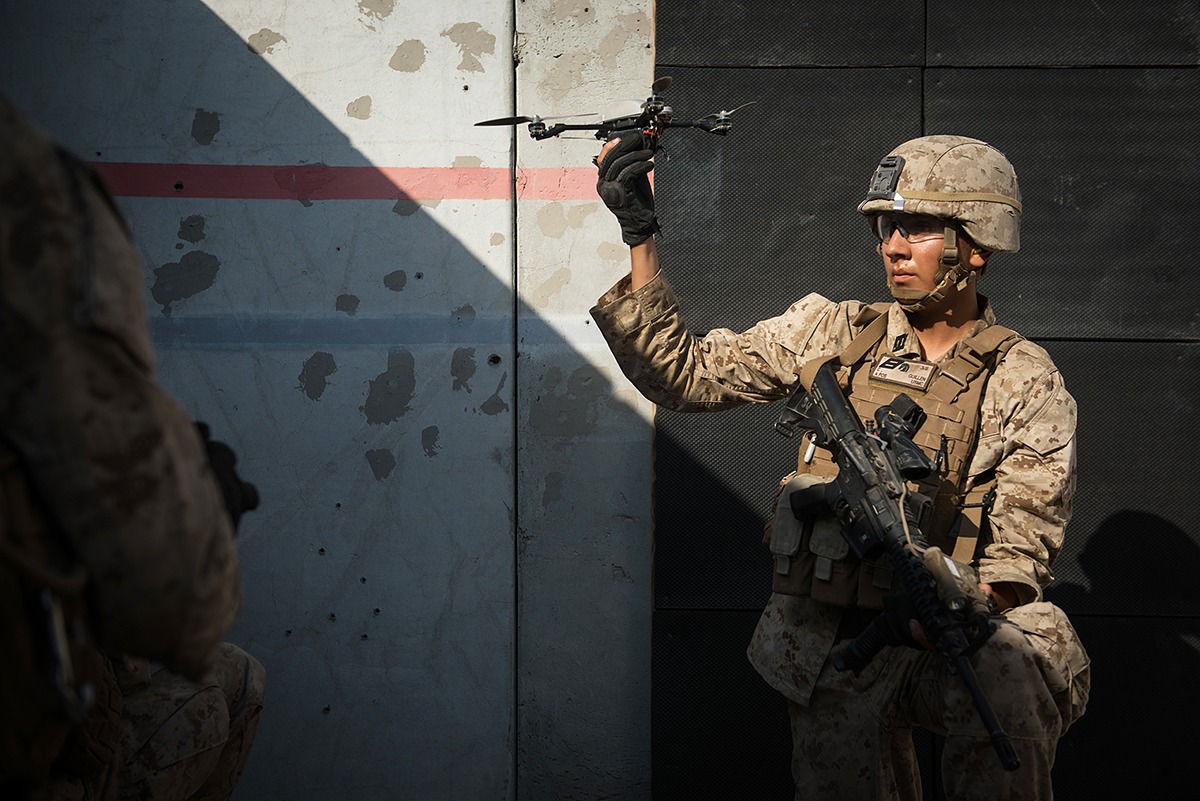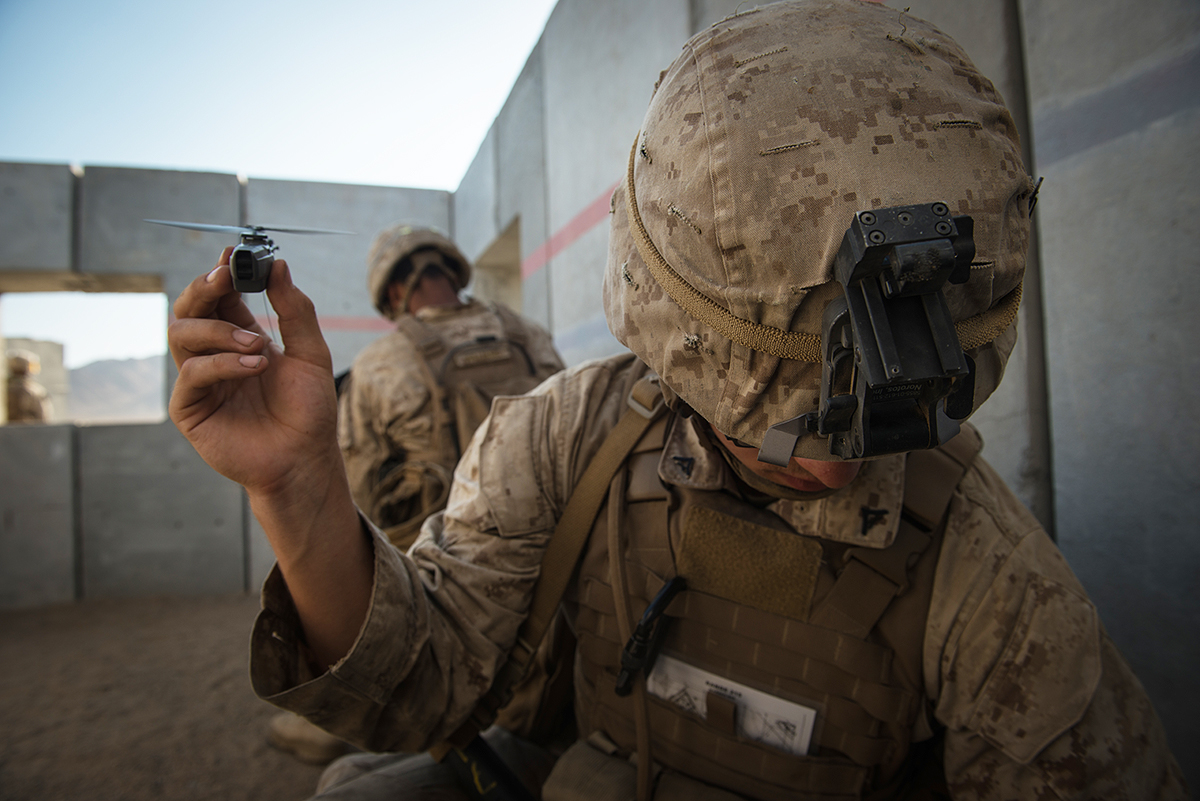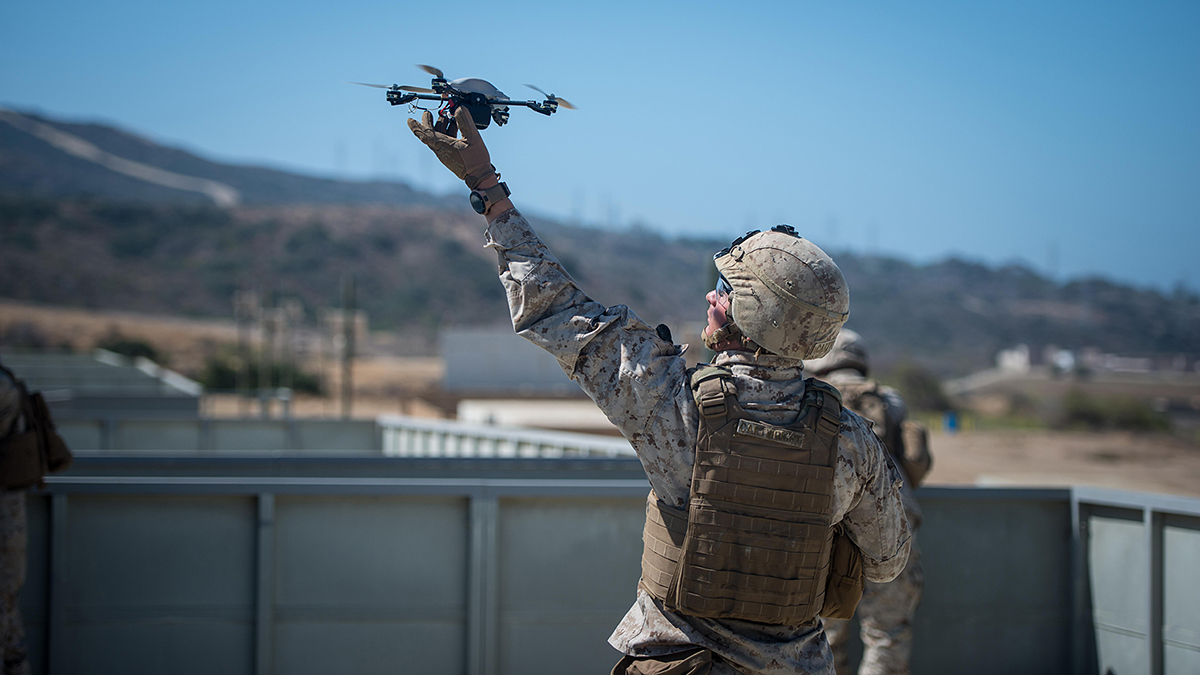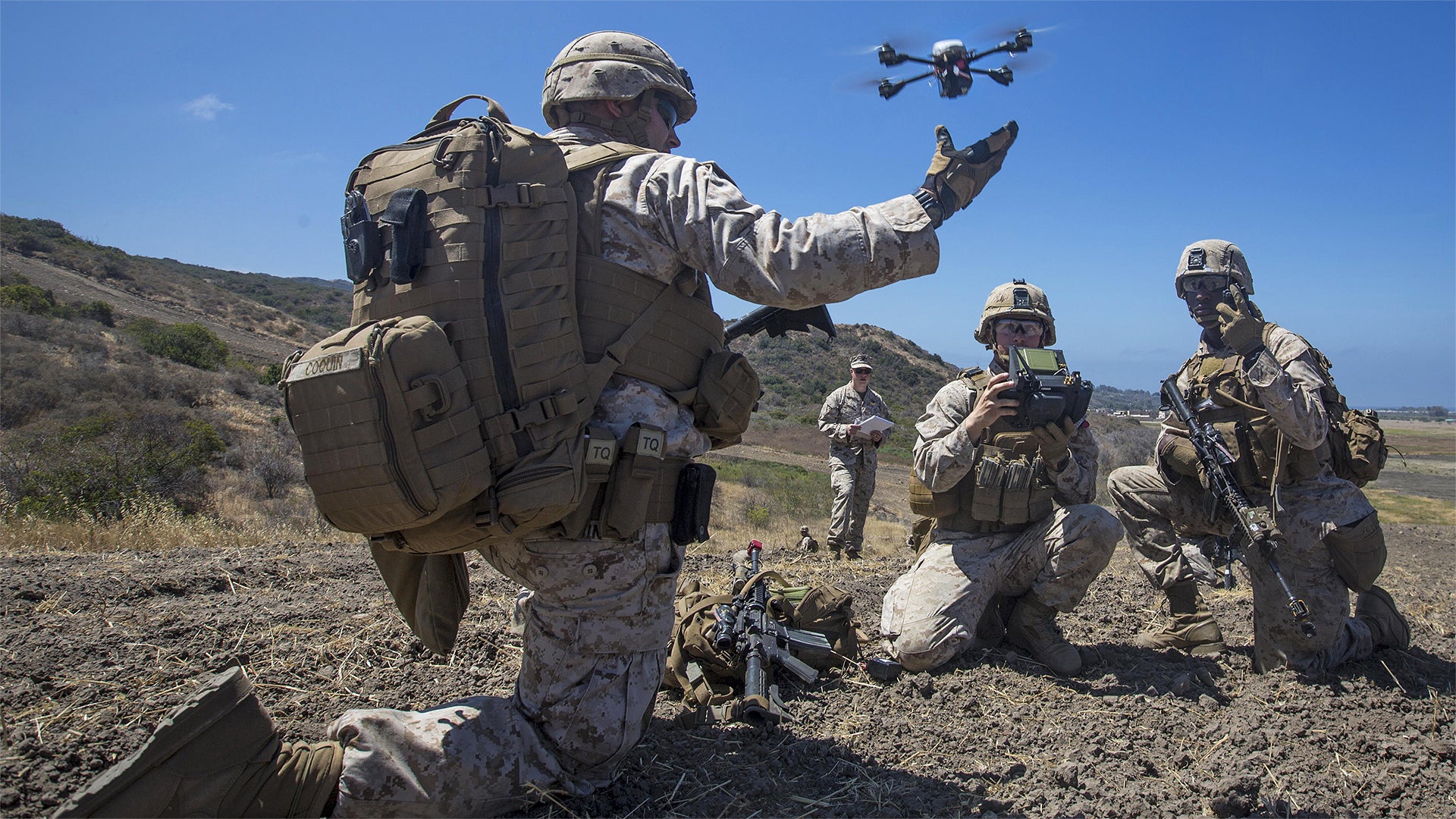Drones are getting smaller, more capable, easier to interface with, and cheaper with every passing day. The USMC is well aware of this, and is pushing to migrate practical tech into the tactical environment on a large scale.
Portable unmanned aircraft systems are morphing from niche capabilities used by special operations forces, such as the Raven, to systems similar to those you can buy at your local hobby store. In fact, in some respects the deployed military capabilities actually lag behind the civilian and commercial drone market. But it’s not just about buying the right drones for squad-level operations, it is also about integrating them into operational fabric of these basic but incredibly deadly fighting units in as seamless a manner as possible.

All this summer, including during RIMPAC 2016, the world’s largest multi-national naval exercise that takes place biannually in and around Hawaii and southern California, the USMC has experimented with integrating relatively simple and easy to control drones into Marine squads, with great results. The two primary platforms that the USMC seems most interested in are the MK2 Instant Eye quadcopter and the almost insect-sized Black Hornet.


The Black Hornet in particular has garnered high interest from the US Army, and is already in service with the UK’s fighting forces. The more powerful Instant Eye offers a more stable platform, larger payload, and is more capable of operating in adverse environmental conditions than the diminutive Black Hornet. Together, they actually offer a good capability mix for small ground combat units operating in the field.
The Commandant of the Marine Corps, General Robert Neller, is especially bullish on integrating drones directly into Marine rifle squads. This may include adding a new position in every squad just for this capability—a move that may disturb some traditionalists inside and outside the USMC; alternately, the new Assistant Squad Leader slot could take on the role.

The potential situational awareness advantages that organic done capabilities add to Marine rifle squad are massive. No longer would line of sight restrict a squad’s knowledge of what lies around the next corner or beyond a tree line. Putting small drones to use at a squad level also means that having to constantly seek an elevated position to obtain better situational awareness will no longer be so rigidly necessity as it once was. It will also allow Marine rifle squads to operate more independently, and give them the ability to react to aerial intelligence quicker than relying on centralized aerial assets and a longer intelligence chain, like they do today.
There is also the reality that these micro- and nano-drones will eventually morph into optionally suicidal loitering munitions, something we discussed in depth recently. That same drone operator position in the Marine rifle squad could one day (probably not far off) choose a Black Hornet with orange bands on it, loaded with a small explosive charge, and fly it right into the window where an expected sniper is hiding. BANG! No more sniper. This is already being done in the lower end of the winged unmanned aircraft market, with the Aeroviroment Switchblade and IAI’s Harop suicidal drone leading the way.
In fact, irregular forces, including ISIS, are already using the concept and getting better and better at it quickly. This has prompted the US military to deploy anti-drone jamming rifles to battlefield Iraq and Syria.

This vision of future combat presents incredible possibilities but also massive security risks, especially as drones become smaller and harder to defend against. Four years ago I wrote the following in my piece “Tyler’s 10 Thoughts On The Future Of Drone Warfare”:
“#3 Drones will get smaller: The days of thinking of “small drones” as those that fit in a Navy SEAL’s backpack are numbered. Soon we will see operational drones the size of a grapefruit, then the size of a dragonfly, and eventually, maybe in 30 years time, we won’t be able to see them at all.
“As drones shrink so will the weapons they carry. Today we see the sub 50lb smart munitions being deployed on smaller drones, yet these cutting edge micro-munitions may prove to be comparatively colossal in time. Eventually miniature UAVs will use sub 5lb guided bomblets and even guided bullets to deal death from on high. Even smaller drones will eventually be capable of taking out the enemy by “biting” or “injecting” them with poison, lethal and non-lethal, very similar to the ways in which insects have operated for millions of years.
“On the sub-micro end of things, nanites or nanobots, which are microscopic robots, will be able to infiltrate computer circuitry or even the human circulatory system in large numbers and conduct repairs or cause catastrophic damage.
“In the end the smallest drones may end up being the most useful and dangerous of all, , living in our bloodstreams and able to act like lifesaving mini-surgeons or as self-replicating weapons of mass destruction for which the only defense may be, dare I say it, anti-nanobot nanobots.
“It is bewildering to think that the world’s most lethal future wars may be fought on a microscopic battlefield.”

In the meantime, the Marine rifle squad will become even more deadly than it already is, by doing what is seemingly long overdue—using relatively inexpensive surveillance drones, and someone who is trained to use them even under the most stressful and austere combat conditions.
Contact the author: Tyler@thedrive.com
